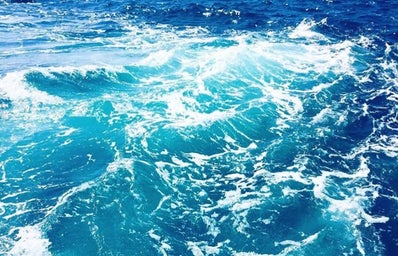When news broke of the Oceangate disaster, I shouted at my parent’s TV — but not because five people had died. In June 2023, Oceangate’s Titan departed on its fourth journey (none of which had been successful yet) as a once-in-a-lifetime, $250,000 chance to see the Titanic. What followed was a five-day news-dominating relief effort for five people who were likely to be dead from the get-go. However, the $7 million spent was good for one thing — proving that people don’t care much for unrelatable news.
What irked me was the Western media’s proliferation of the idea that the 5 aboard could have survived at any point during the recovery. Engineers, responders, ex-Oceangate employers, surely even common sense would have told you that those people had almost certainly died in an implosion during the descent to the Titanic. Not a single professional backed the claim that the 5 could have survived Titan actually imploding. Yet, the public wanted to believe it so badly they pressured governments into spending over $7 million on rescue efforts over several days – for people who were going to be dead. All the evidence soon pointed to the fact that there was no hope of recovering the 5 lost at sea (which was a tragedy, as human loss is always human loss, no matter who the people are and the choices they made). Here’s why:
- One hour and forty-five minutes into Titan’s journey, a nearby U.S. Navy acoustic detection system detected an auditory signature consistent with a machine implosion.
- Finding the vessel was a feat in itself. Among the U.S. Coast Guard, The U.S. Navy, the Canadian Coast Guard, and the Canadian Air Force, entirely too many ships, aircraft, drones, and sonobuoys covered 10,000 nautical square miles—all to recover a subversive about 3 metres long.
- If, in fact, the 5 had survived the ‘implosion’ and were now resting on the seafloor, the submersive would have had to be lifted back to the surface. There were less than ten machines available globally that were able to do such a thing. When an Odysseus 6k ROV was found, it took them all of three days to transport it to Titan.
- Okay, great, so you’ve found Titan, and somehow you’ve managed to plonk it on a floating platform on the ocean’s surface. That’s it right? Wrong. Now you have to get those people out. But the engineering of the subversive meant that it wasn’t designed to depressurise in a rescue effort. What does that mean? Crack a door open to let the five have their freedom, and they would have died instantly. It was more of a, “you stop becoming biology and become physics” thing.
- By the time the ROVs arrived, the’ 96 hours of breathable air supply’ would have run out. So, what would have been a rescue mission theoretically became a recovery mission.
So on all counts, the five – Stockton Rush (the profiteering CEO of OceanGate), Hamish Harding, Paul-Henri Nargeolet, and father and son Shahzada and Suleman Dawood – would have died if they hadn’t already. However, the British media did not care. They slapped the oxygen countdown onto anything and everything, spurring hope in a general public that should have known better. And foolishly, many people believed them in the name of hope. In this story, there were clear winners and clear losers. There were protagonists, and there were villains. Not only was it news, it was a movie playing out in reality. And the only survivor? The Logitech controller used to control the ship. The internet was quick to say, “they got Titanic’d”.
What made the story of OceanGate so attractive to the news outlets was how insanely complicated the people involved were – they weren’t just faces we got to put stories to; they were people we loved, and they were people we hated. Some of the standout news items that followed this disaster included:
- A former employee of Stockton Rush, David Lochridge, spoke to the CEO about worries he had with the carbon fibre structure of the submersive. Rush asked him to leave within the week and Lochridge has since filed a lawsuit against the company.
- In now-deleted safety videos, Rush tours Titan and calls the machine ‘indestructible.’ Ridiculous.
- Hamish’s stepson went to a Blink-182 concert shortly after his death. When questioned, he responded, ‘My family would want me to be here.’ Not too soon after, he took to Twitter asking for thoughts and prayers and immediately followed it up by tweeting an OnlyFans model – asking her to sit on his face (grief does affect us all differently, I suppose).
- The vessel was never allowed to be called a submarine because it never passed any safety checks, a fact known by the CEO. Rush put profiteering above all else — he wanted to be the man that made it all happen, and safety checks and the worries of others stood in his way.
- The only door into the submersible could not be opened from the outside. If the machine resurfaced, five dead people would have had to find a way to open the door for their rescuers.
- Logitech is now suing OceanGate for the bad PR. To be fair, the controller was known in the Amazon-review community for having connection problems.
- Finally, this image which I found on tumblr (from @ nevvyland):
The real kick in the teeth about OceanGATE is that at the same time as five very rich people who were almost guaranteed to have been dead the entire time were being rescued, 500 Pakistani migrants were drowning off the coast of Greece. What the UN calls one of the biggest tragedies in the Mediterranean received no immediate rescue operations, and many argue that the boat sank at the hands of the Greek authorities – the HCG.
This is the major problem with modern news. When news is faceless, and there are no people to popularise, there are also no stories. When there are no stories, there are no sides, no one to rally against or stand with. We often do not care who wins and who loses because we can’t relate to anyone. Consequently, the world loses interest.
One of the most glaring consequences of faceless news is the dehumanisation of victims. When journalists obscure or fail to find the identities of those affected by events or issues, they risk reducing them to mere statistics or abstract concepts, detached from the realities of their lives. Whether it’s victims of violence, injustice, or societal challenges, anonymity robs them of their agency and denies them the opportunity to be heard and understood.
Moreover, faceless news perpetuates a cycle of silence and marginalisation, particularly for vulnerable communities like the Pakistani migrants. When victims remain nameless and their stories untold, their experiences are relegated to the periphery of public consciousness, overshadowed by more sensational or high-profile news stories like OceanGate. This not only perpetuates stereotypes and misconceptions but also systemic injustices by denying those affected a platform to advocate for change.
Furthermore, the anonymity of victims in faceless news undermines the public’s ability to empathise and connect with their experiences. Empathy is a cornerstone of responsible journalism, enabling audiences to understand and relate to the struggles of others. When victims are reduced to faceless entities, empathy is diminished, and the audience is less likely to engage with the underlying issues or take action to address them. It’s a tragic cycle. We can’t connect with the victims if news stories aren’t given faces. If we can’t connect with or relate to them, the Western world loses interest.
I hope you’ve noticed that I spent most of this article talking about the OceanGate disaster and only seventy-five words on the migrant boat – when the pitch and title suggest it should have been equal. I am not innocent – I suffer the same ailment I’ve accused the media of. Because the Titan’s victims were given faces – they were given names, stories, personalities – things we can relate to, criticise, mourn and write about. All I can comment on the migrant boat is the absence of information. It’s a tragic realisation. Western media will always favour the known over the unknown, and we’ll always take more interest in people whose shoes we can walk in. After all, I believe Joseph Stalin said it best: “One death is a tragedy, a million deaths is a statistic,” and numbers don’t make news. Stories do.
When news broke of the Oceangate disaster, I shouted at my parent’s TV — but not because five people had died. In J


